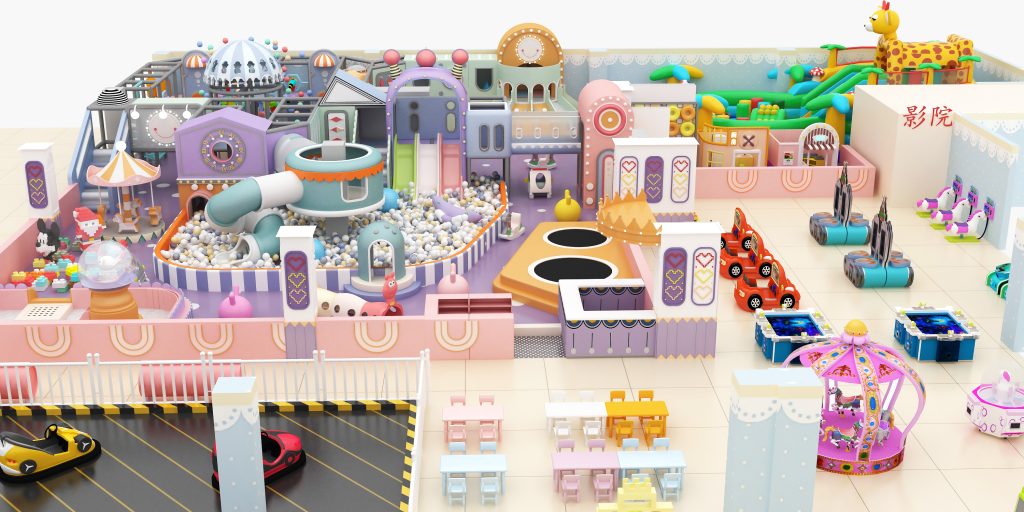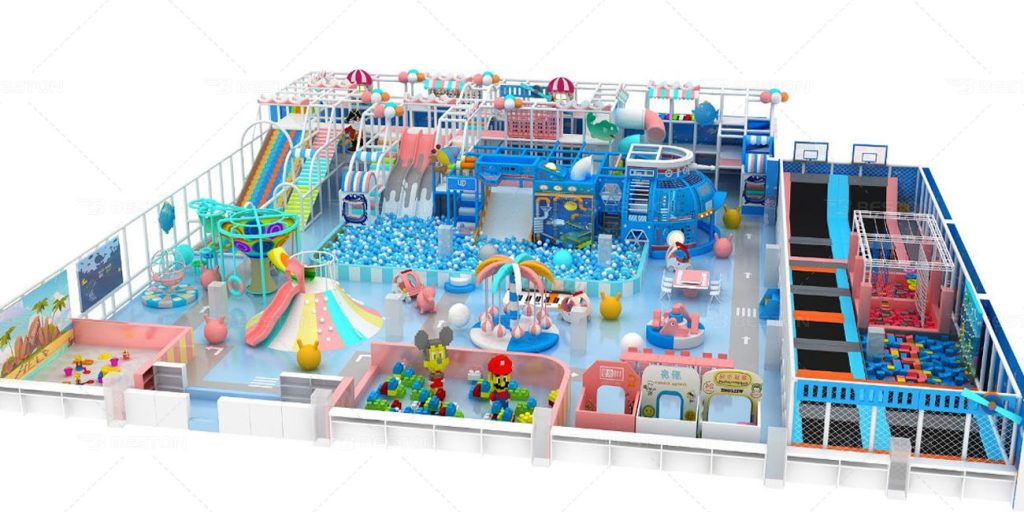Indoor playground structures have become integral spaces for children to unleash their energy, stimulate their imagination, and foster crucial developmental skills. In this article, we will delve into the world of indoor playground structures, exploring their benefits, types, safety considerations, design principles, and their impact on children’s development. Join us on this exciting journey as we discover the secrets to creating captivating play environments for children.
Benefits of Indoor Playground Structures
Indoor playground structures offer a myriad of physical, cognitive, and social benefits for children. These structures provide a safe and controlled environment where children can engage in active play, explore their capabilities, and develop important skills.
Physically, indoor playground structures contribute to the enhancement of motor skills. With climbing walls, slides, and obstacle courses, children have ample opportunities to improve their balance, coordination, and overall strength. As they navigate through various play elements, they develop agility and spatial awareness.
Cognitively, indoor playground structures stimulate imaginative play. They serve as a canvas for children’s creativity, allowing them to embark on thrilling adventures and play different roles. This imaginative play fosters creativity, problem-solving, and critical thinking skills. Children learn to navigate challenges, make decisions, and discover their own solutions.
Socially, indoor playground structures provide a platform for interaction and collaboration among children. As they climb, slide, and explore together, they learn to communicate, cooperate, and negotiate. These structures create shared spaces where children engage in cooperative play, fostering teamwork and developing essential social skills.

Types of Indoor Playground Structures
There are various types of indoor playground structures, each offering unique features and play experiences.
Modular play systems are versatile and customizable, allowing for endless configurations. They feature a variety of play elements such as slides, tunnels, bridges, and climbing walls. These systems cater to different age groups and can be tailored to specific space requirements. The flexibility of modular play systems enables designers to create unique and engaging play environments.
Soft play equipment is specifically designed for younger children. Constructed from soft foam and covered with colorful fabric, these structures offer a safe and comfortable play experience. Soft play structures provide opportunities for crawling, climbing, and imaginative play while minimizing the risk of injuries.
Themed play structures ignite children’s imagination by immersing them in exciting worlds. From pirate ships to enchanted castles, these structures transport children to imaginary realms where they can embark on thrilling adventures. Themed play structures inspire creative play and storytelling, encouraging children to bring their fantasies to life.
Safety Considerations for Indoor Playground Structures
Ensuring the safety of indoor playground structures is paramount. Quality and durability of materials are crucial factors in creating a safe play environment. Structures should be built to withstand the rigors of regular use, providing a secure and stable play environment. The selection of materials should prioritize strength, non-toxicity, and resistance to wear and tear.
Proper installation and maintenance are essential for the safety of indoor playground structures. They should be installed by professionals following manufacturer guidelines and safety standards. Regular maintenance is necessary to identify and address any potential hazards, such as loose bolts, worn-out components, or damaged surfaces. Establishing a routine inspection and maintenance schedule helps keep the play structures in optimal condition.
Compliance with safety standards and regulations is another vital aspect. Indoor playground structures should adhere to safety standards and regulations established by relevant authorities. These standards address various aspects of design, materials, installation, and maintenance, ensuring the highest level of safety for children. Compliance with safety guidelines provides peace of mind to parents and caretakers, assuring them that their children can play in a secure environment.

Designing an Indoor Playground Structure
Indoor playground structure design involves careful planning and consideration of various factors. Space assessment and planning are crucial to optimize the use of available space and ensure adequate room for children to move and play freely. Factors such as accessibility, traffic flow, and zoning different play areas should be considered during the planning stage.
Incorporating age-appropriate features is vital to cater to the specific needs of different age groups. Designers must consider the physical capabilities and developmental milestones of children at different stages. Separating play areas for infants, toddlers, and older children helps create safe and engaging environments for each age group.
Maximizing play value through layout and arrangement is essential to create a dynamic and stimulating play environment. Strategic positioning of various play elements, balance between active and quiet play areas, integration of sensory experiences, and incorporation of imaginative play spaces contribute to an enriching play experience.
Maintenance and Cleaning of Indoor Playground Structures
Regular inspection for wear and tear is crucial to identify any signs of damage or deterioration in indoor playground structures. Frequent inspections help detect issues such as loose or broken components, damaged surfaces, and signs of structural weakness. Prompt repairs and replacements ensure the continued safety and longevity of the play structures.
Cleaning procedures for different materials should be followed to maintain hygienic play environments. Soft play equipment may require gentle cleaning agents, while hard surfaces can withstand more rigorous cleaning techniques. Regular cleaning helps prevent the spread of germs and ensures a clean and safe play environment for children.
Ensuring hygienic play environments is essential, especially in shared spaces. Establishing proper hygiene practices, such as encouraging handwashing before and after play, using antibacterial sprays or wipes on high-touch surfaces, and implementing rules regarding food and drink consumption, helps create hygienic play environments for children.
Indoor playground structures are not merely play areas; they are gateways to imagination, growth, and social interaction for children. By understanding the benefits, types, safety considerations, design principles, maintenance, certifications, and compliance of indoor playground structures, we can create captivating and enriching play environments. Let us embrace the power of play and invest in indoor playground structures that inspire and empower the next generation of children. Together, let us unlock the world of adventure within indoor playground structures.